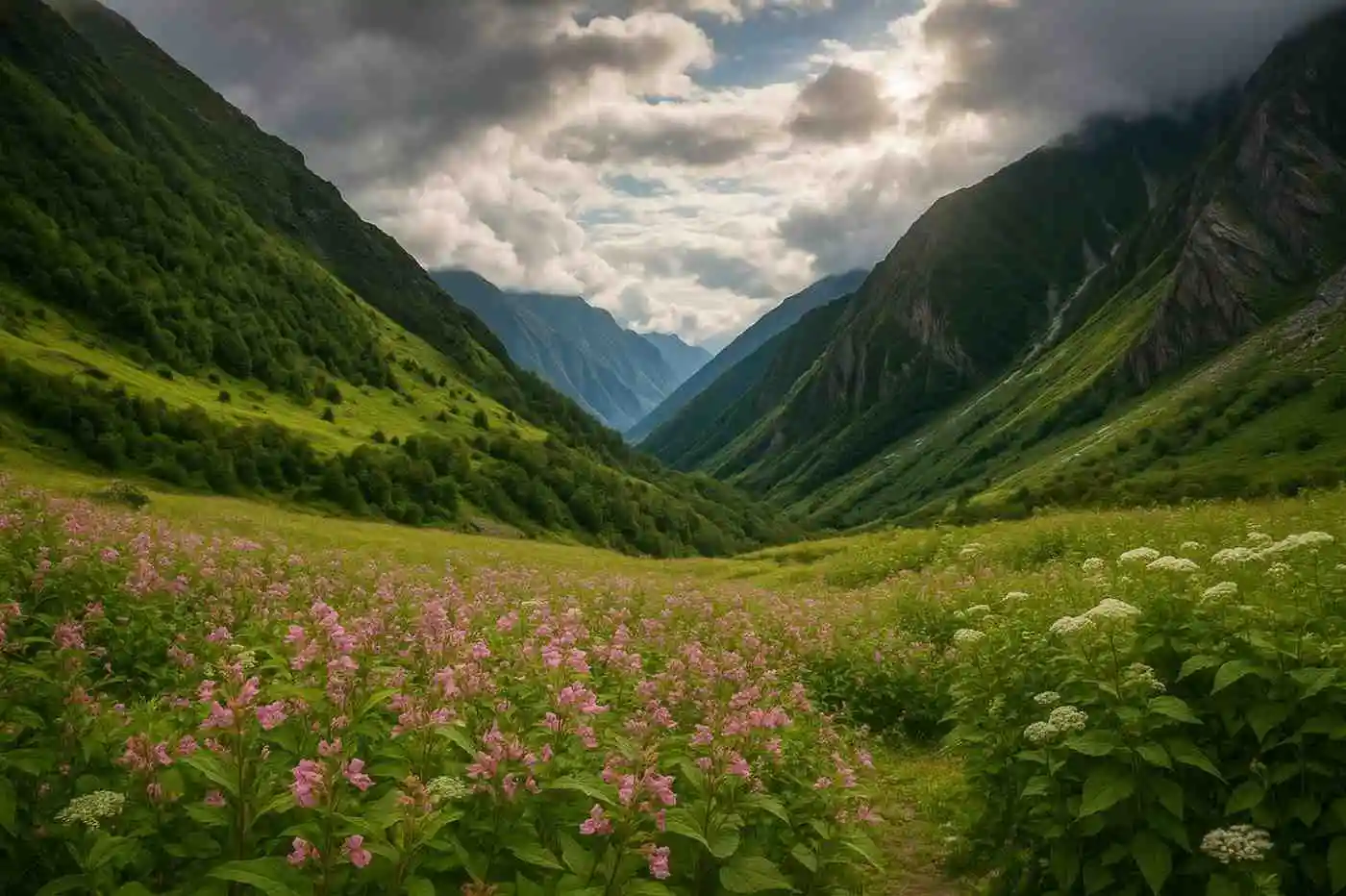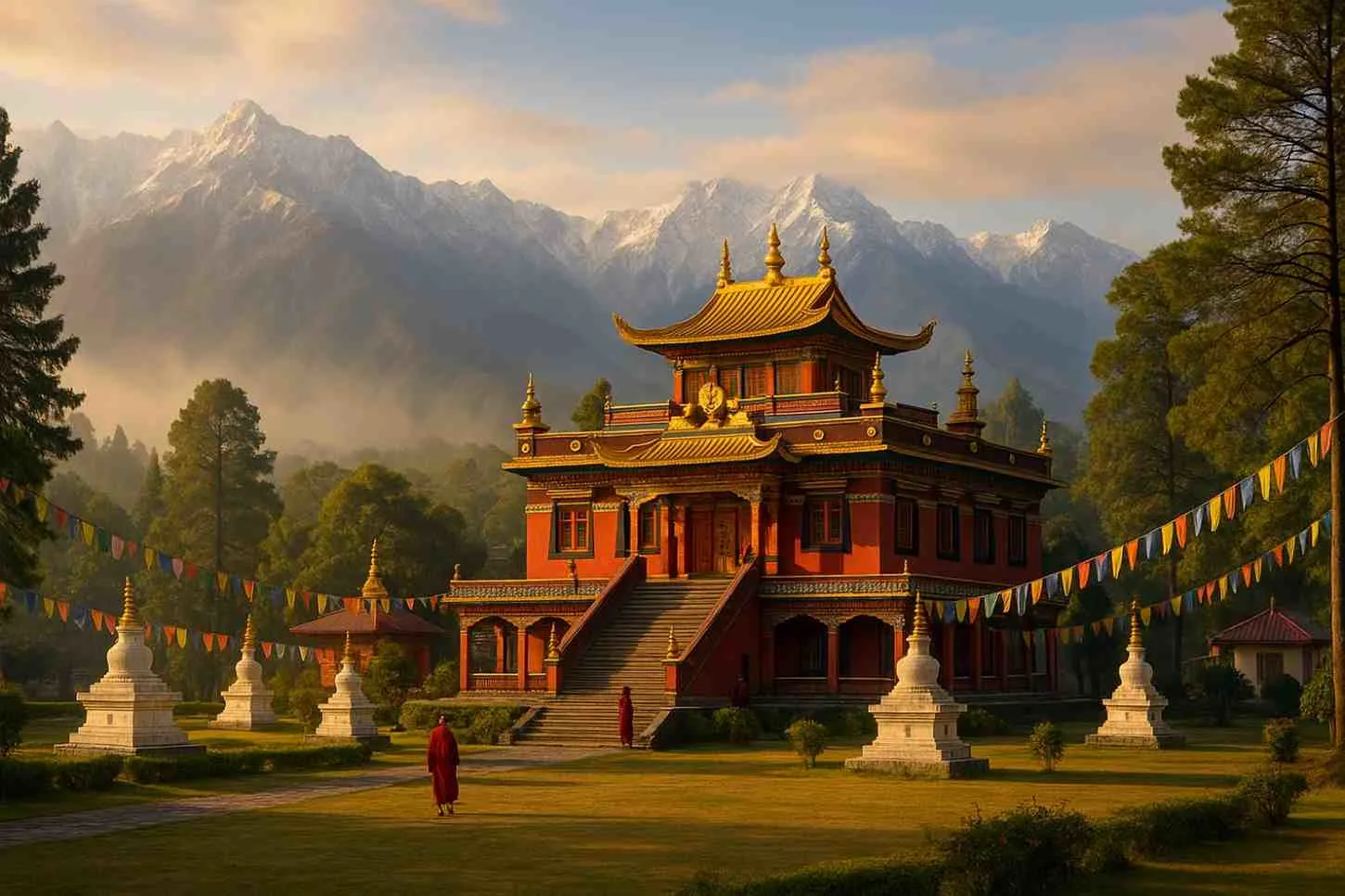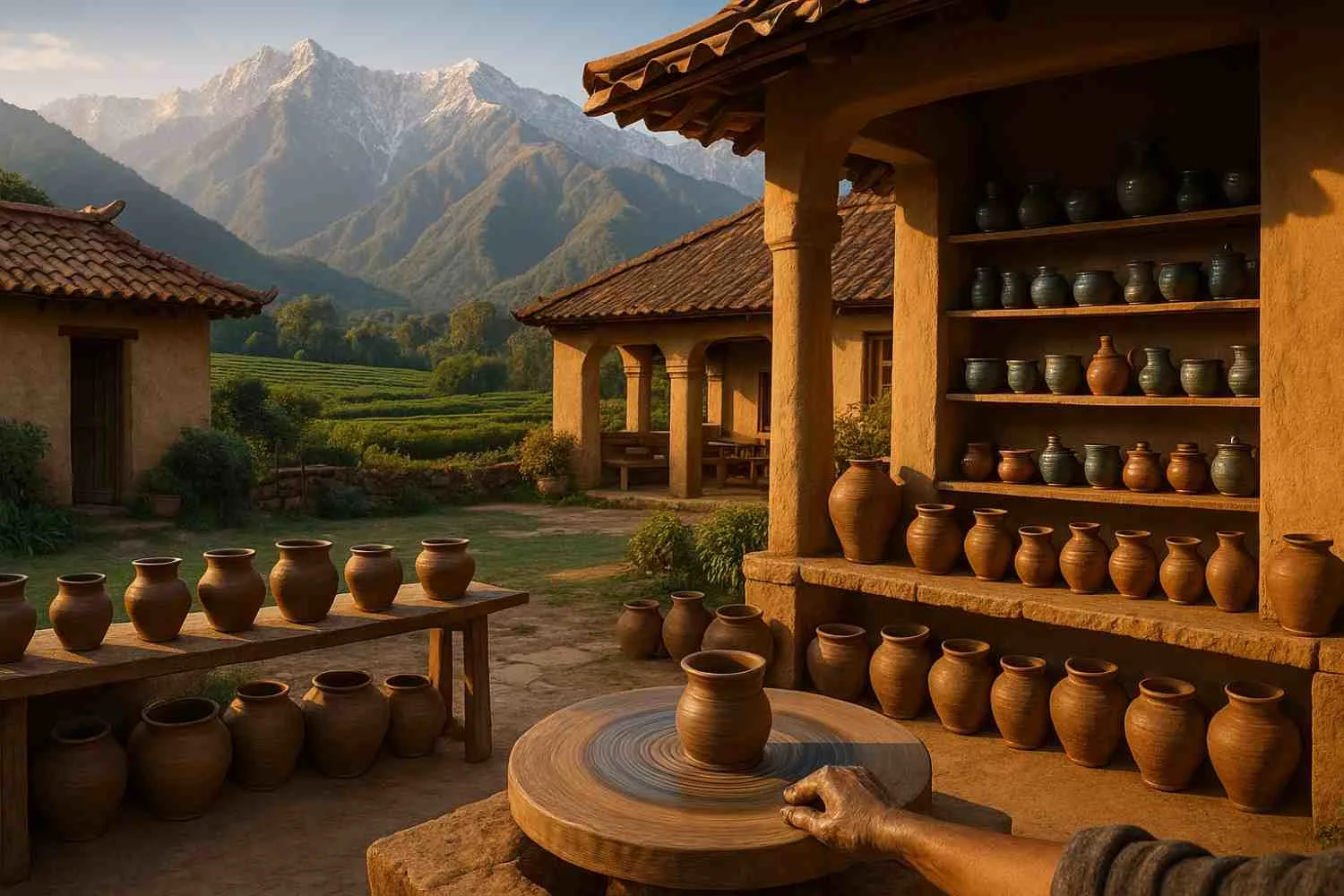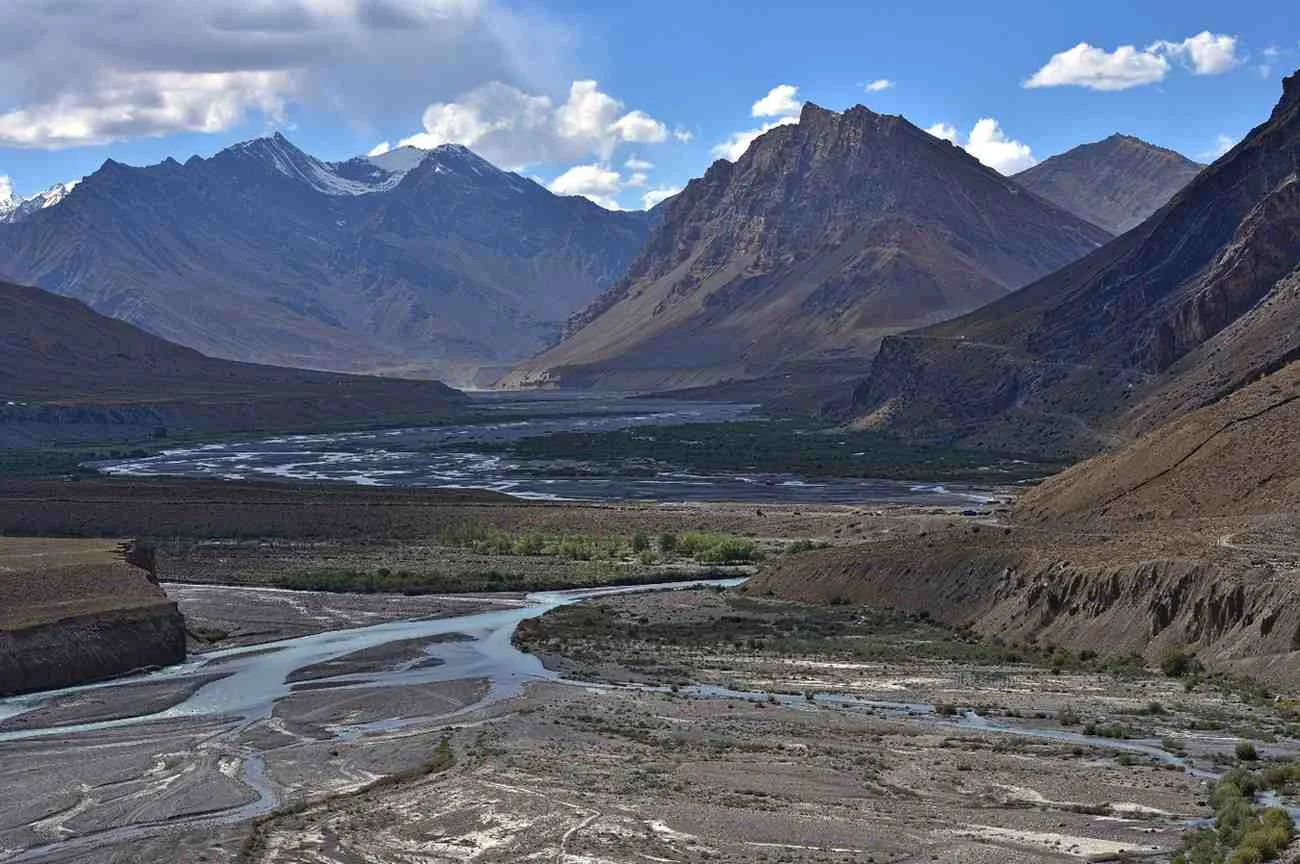Auli Hill Station in Uttarakhand is a high-altitude playground where quiet meadows turn into ski slopes and every ridge points to a giant of the Himalaya. Sitting around 2,800 meters in the Chamoli district, Auli is wrapped in conifer forests and ringed by legendary peaks—Nanda Devi, Trishul, Kamet, Hathi-Ghoda—it’s a 360-degree postcard. No surprise people call it the Skiing Capital of India.
What this really means is you get two Aulis in one. In winter, powder-coated slopes, ski lessons, and chairlifts. In summer, flower-brushed bugyals (alpine meadows), crisp air, and big mountain panoramas. Add the iconic Auli Ropeway, an artificial lake that glows in the evening light, and the pilgrim-town energy of nearby Joshimath, and you’ve got a hill station that works year-round for families, trekkers, and first-time snow chasers alike.
This guide covers the nuts and bolts—best time to visit Auli, how to reach, Auli ropeway details, where to stay, what to pack, Auli weather by season, and a practical list of Auli tourist places that are worth your time.
How to Reach Auli
Getting to Auli is straightforward once you understand the last-mile game. You’ll first reach Joshimath, the gateway town. From there, you either take the Auli Ropeway (when operational) or drive up a mountain road to the meadows.
1. By Air
- Nearest airport: Jolly Grant Airport (Dehradun), roughly 270 km from Auli/Joshimath.
- Typical route: Dehradun → Rishikesh → Srinagar → Rudraprayag → Karnaprayag → Chamoli → Joshimath → Auli.
- Travel tip: Break the journey at Rishikesh or at Srinagar/Rudraprayag if you’re flying in late. Mountain roads are best tackled early morning.
2. By Train
- Nearest major railheads: Haridwar and Rishikesh.
- From either station, take a taxi or a state/Volvo bus to Joshimath. Buses are cheaper but slower; taxis let you stop for chai, photos, and leg-stretches.
3. By Road
- From Rishikesh/Haridwar: Plan 9–11 hours to Joshimath depending on traffic and monsoon conditions. The Alaknanda runs beside you most of the way; it’s a beautiful drive with frequent dhabas.
- From Joshimath to Auli: Two options:
- Auli Ropeway (more on this soon).
- Road drive (about 12–15 km uphill), which is handy if the ropeway is shut due to weather or maintenance.
- Auli Ropeway (more on this soon).
Pro tip: In winter, snowfall can close the hill road for short windows. Local taxis know the drill—follow their advice, carry chains if you’re self-driving, and be flexible with time.
Best Time to Visit Auli
Auli shifts character by season, which is half the fun. Here’s the quick take:
- December to March: Ski season. Expect snowfall, low temperatures, and that classic alpine vibe. Great for skiing, snowboarding, and snow-play. Plan for cold—sub-zero nights are normal.
- April to June: Sunny and crisp. Meadows wake up, skies are clear, and peaks look razor-sharp. Ideal for sightseeing, short treks, and ropeway rides without the bite of winter.
- July to September: Monsoon mood. Hills turn neon green, mist rolls in, and the landscapes feel cinematic. Road delays are possible, but the mountain drama is real.
- October to November: Autumn clarity. Fewer crowds, cool nights, and crystal views. You may catch the first light snow dusting in late November on surrounding peaks.
If you’re chasing specific experiences:
- Auli skiing: Late December to February is prime, with January typically at its snowiest.
- Photography and long views: October–November and April–June.
- Budget travel: Shoulder months (late November or early April) often have better rates with decent weather.
Top Attractions in Auli
1) Auli Ropeway
Ask anyone what to do in Auli, and they’ll mention the ropeway first. This cable car links Joshimath to Auli and is among the longest in Asia. The cabins swing over dense oak and deodar forests with the Nanda Devi massif unfolding in the distance. It’s not just transport—it’s a sightseeing ride in itself.
- Why ride: Epic views, no winter driving worry, and a “you’ve arrived” moment as the meadows glide into view.
- Tips: Tickets are limited in peak season; book in advance at the counter or through local operators. If visibility is poor or winds are high, expect temporary halts.
2) Auli Artificial Lake
Perched near the ski slopes, this man-made lake was created to support snow-making, ensuring smoother ski conditions even when snowfall is patchy. At sunset, the lake mirrors the orange glow on the ridges. In winter, it adds a surreal touch to the snowscape; in summer, it’s an easy stroll spot.
3) Joshimath
Your base town, home to Adi Guru Shankaracharya Math, centuries-old temples, and a lively bazaar. Many Char Dham pilgrims stay here before moving to Badrinath. It’s also where you’ll find better ATMs, mechanics, and last-minute supplies.
4) Gurso Bugyal (also spelled Gurson)
A 3 km trek from Auli, Gurso Bugyal is an undulating grassland with huge Himalayan theatre seating. On clear days you’ll spot Nanda Devi, Dronagiri, Trishul, and Hathi-Ghoda peaks without breaking a sweat. Spring and autumn are gorgeous; in winter it’s a snowfield.
5) Chenab Lake
Quieter and more remote, Chenab Lake calls to those who prefer the hush of a lesser-known spot. The walk winds through thick forest and meadows; go with a local guide for route clarity and safety. Pack snacks and water—there are few facilities.
6) Auli Ski Resort and Slopes
Auli’s ski fields are spread across gentle to moderate gradients, perfect for beginners and improvers. You’ll find rental shops, instructors, and a friendly learning curve. When snow hits a purple patch, advanced riders carve longer lines toward the chairlift zones.
Places to Stay in Auli
You’ve got options across budgets and moods—slope-side convenience, valley views from Joshimath, or rustic-luxe cottages tucked into the trees.
- GMVN Auli Tourist Bungalow: Classic government-run stay near the slopes, often booked by early birds for winter. Expect simple rooms, hot meals, and proximity to the action.
- The Cliff Top Club Resort: One of Auli’s best-known addresses, especially for those who want comfort right by the ski fields.
- Himalayan Eco Lodge (Joshimath): Cozy rooms, warm dining spaces, and reliable service if you prefer to base in town and day-trip to Auli.
- Budget hotels & homestays near the ropeway: In both Auli and Joshimath you’ll find guesthouses and homestays that do the basics right—hot water, hearty food, and help with local logistics.
Booking tip: For New Year and January, book weeks in advance. For April–June weekends, early reservations still help you snag rooms with views.
Things to Do in Auli
Skiing and Snowboarding
No surprise here. If you’ve never skied, Auli is a forgiving classroom:
- Lessons: Sign up for 1–3 day beginner courses. You’ll learn stance, snowplough, and basic turns.
- Gear rental: Available near the slopes—skis, poles, boots, helmets. Dress in warm, layered clothing with waterproof gloves.
- Fitness: A bit of leg strength and balance goes a long way. Stretch before and after.
Ropeway Ride
Even if you’re staying in Auli, hop on the ropeway once just for the aerial views. Try timing it for golden hour when the peaks glow.
Treks: Gurso Bugyal & Kwani Bugyal
- Gurso Bugyal: Short, scenic, doable for families. In summer, it’s wildflowers and wide horizons; in winter, an easy snow-walk with spikes.
- Kwani Bugyal: Longer and quieter. Best tackled with a guide in non-winter months.
Camping Under the Stars
Clear nights in shoulder seasons are unreal. Choose authorized campsites or operator-run setups—don’t pitch in meadows without permission. Nights can be sharply cold, even in May, so bring proper sleeping bags.
Photography and Local Cuisine
Shoot the giant trio—Nanda Devi, Trishul, Kamet—from different vantage points. For food, go local: Garhwali thalis, kafuli, pahaadi mutton, aloo ke gutke, and hot gur-chai. In winter, Maggi at a slope-side shack tastes like gourmet.
Day Trips
Auli sits in a rich neighborhood:
- Tapovan Hot Springs: A short drive from Joshimath—soak those trek-tired legs.
- Bhavishya Badri (trek + temple): For a quiet, spiritual excursion through oak and rhododendron.
Auli Nearby Tourist Places
- Joshimath (12 km): Ropeway base, temples, and market.
- Valley of Flowers (about 37 km to Govindghat roadhead): Open in monsoon months; alpine meadows in peak bloom.
- Badrinath Temple (≈60 km): One of the Char Dham. Combine with Mana village if time allows.
- Nanda Devi National Park (buffer area access): For seasoned trekkers; permits and planning required.
- Tapovan Hot Springs: Natural sulphur springs with mountain views.
- Auli to Auli Bugyals circuit: If you’re into day-hikes, ask locals about less-publicized meadow walks when the snow melts.
Auli Weather: What to Expect by Season
- Winter (Dec–Mar): Day 0–8°C, night well below zero. Snowfall likely in Jan–Feb. Carry down layers, thermal base layers, waterproof outerwear, and insulated boots or gaiters.
- Spring (Apr): Days 8–15°C, nights 2–8°C. Meadows begin to green; skies clear after occasional showers.
- Summer (May–Jun): Days 12–20°C, crisp evenings. Ideal for treks and long views.
- Monsoon (Jul–Sep): Days 10–16°C, mist/fog, lush hills. Roads may see delays; plan buffer time.
- Autumn (Oct–Nov): Days 8–15°C, nights 0–6°C, clean air and big vistas.
Always check the forecast before committing to the ropeway or hill drive. Auli weather turns quickly.
How Much Time Do You Need?
- Quick escape (2 days): Ropeway, Gurso Bugyal walk, sunset at Artificial Lake.
- Balanced trip (3–4 days): Add skiing lessons (in winter) or Chenab Lake day-hike (in summer), plus Tapovan springs.
- Explorer (5–6 days): Mix Auli highlights with Valley of Flowers (monsoon) or a Badrinath–Mana loop.
Sample Itineraries
Winter (3 Nights)
- Day 1: Arrive Joshimath → ropeway to Auli → sunset by the lake.
- Day 2: Beginner Auli skiing lesson + chairlift ride → hot lunch → stargazing if clear.
- Day 3: Trek to Gurso Bugyal (snow-walk) → café/chai crawl → ropeway/glide back.
- Day 4: Down to Joshimath → Tapovan springs → depart.
Summer (4 Nights)
- Day 1: Rishikesh → Joshimath (halt).
- Day 2: Early ropeway → Auli meadows and viewpoints → Gurso Bugyal trek.
- Day 3: Chenab Lake hike with guide → picnic lunch → return.
- Day 4: Day trip to Badrinath–Mana or Tapovan → evening in Joshimath.
- Day 5: Return.
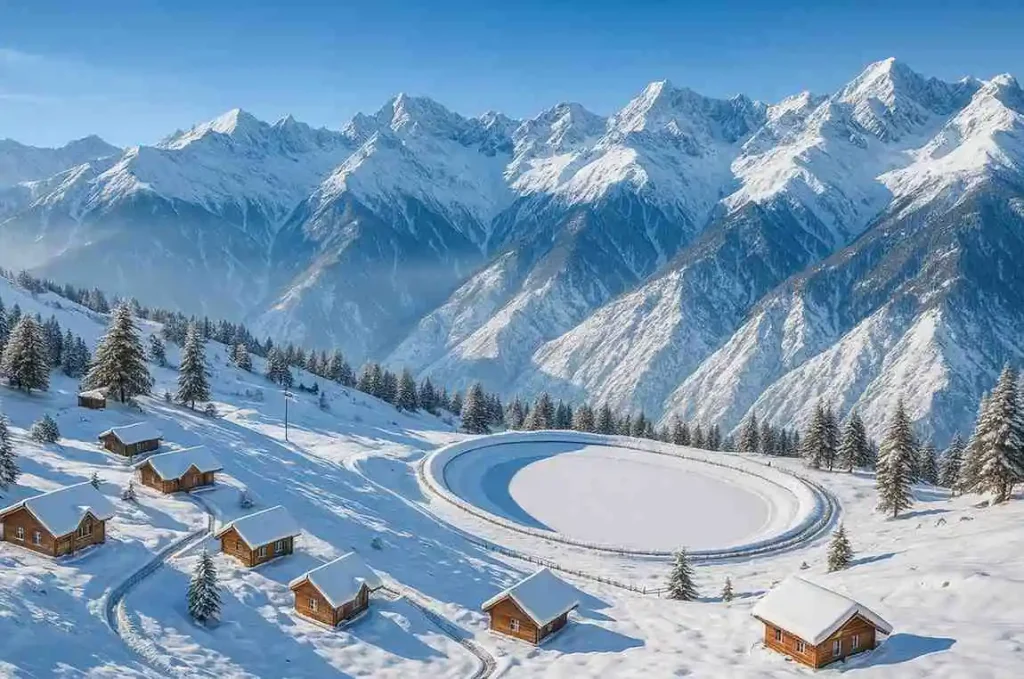
Costs and Logistics (Indicative)
- Ropeway ticket: Typically a few hundred to low-thousand INR range per person (return). Prices vary by season/category—carry ID and check at counters.
- Ski lessons: Half-day beginner sessions often start in the low thousands; multi-day courses cost more but offer serious progress.
- Gear rental: Budget for skis/board, boots, helmet, and gloves if you don’t own them.
- Local taxis: Fixed-rate stands are common. Share rides when possible.
- Stays:
- Budget homestays: ₹1,200–₹2,500
- Mid-range: ₹3,000–₹6,000
- Slope-side resorts: ₹6,000+ (peak winter can be higher)
- Budget homestays: ₹1,200–₹2,500
Safety and Responsible Travel
- Altitude: At ~2,800 m you may feel a little slower. Hydrate, avoid heavy exertion on day one, and skip alcohol if you’re feeling off.
- Road conditions: In snow or monsoon, allow extra time. Don’t pressure drivers to hurry.
- Waste discipline: Auli’s beauty relies on all of us. Carry a small trash bag; bring your waste back down.
- Respect bugyals: Meadows are fragile. Stick to marked trails and avoid off-roading.
- Wildlife & forests: This is Himalayan habitat. No loud music in open areas, no littering, and no fires outside authorized sites.
Travel Tips for Auli
- Pack warm layers even in May and October; evenings get cold.
- Book ropeway tickets early in peak months; walk-ins often wait.
- If heavy snowfall is forecast, avoid self-driving unless you’re experienced with chains and steep hairpins.
- Keep cash; ATMs are limited and sometimes out of service.
- Footwear matters: Waterproof hiking shoes or insulated boots for winter.
- Sunscreen and sunglasses: Snow glare is real.
- Power bank: Cold drains batteries fast.
- Stay flexible: Auli weather can shift plans; have a Plan B activity (hot springs, temple visits, café time).
Conclusion
Auli Hill Station is that rare place where adventure and stillness coexist. One hour you’re learning to ski on a gentle slope, the next you’re watching the sun pour gold on Trishul from a quiet meadow. Come in winter for powder and chairlifts. Come in summer for high trails, long views, and picnic afternoons by the lake. Either way, Auli delivers the good stuff—clean mountain air, giant horizons, and the feeling that life just slowed down a notch to let you look around.
If best time to visit Auli has been on your mind, lock dates that match your vibe—snowy thrill or sunlit stroll—and go. Book the Auli ropeway, grab a room with a view, and make space for the unexpected: a perfect sky, a surprise snowfall, a hush that only the Himalaya can teach.
FAQ
What is Auli famous for?
Skiing, the Auli Ropeway, panoramic Himalayan views (Nanda Devi, Trishul, Kamet), and gentle meadows like Gurso Bugyal.
How to reach Auli from Rishikesh or Haridwar?
Drive or take a bus/taxi via Srinagar–Rudraprayag–Karnaprayag–Chamoli to Joshimath. From there, ride the ropeway (when running) or drive up to Auli.
What is the best time to visit Auli?
- Dec–Mar for snow and skiing
- Apr–Jun for clear skies and treks
- Jul–Sep for lush monsoon landscapes
- Oct–Nov for autumn clarity and fewer crowds
Can beginners do skiing in Auli?
Yes. Auli is perfect for beginners with instructors, gear rentals, and forgiving slopes.
How high is Auli above sea level?
Around 2,800 meters (the surrounding viewpoints and bugyals go higher).
Is there snowfall in Auli every year?
Generally yes across winter, with January–February the most reliable months.
What are the top things to do in Auli?
Skiing/snowboarding, Auli ropeway rides, Gurso Bugyal trek, Chenab Lake hike, camping, Tapovan hot springs, and photography.
Which are the nearest tourist places to Auli?
Joshimath, Valley of Flowers (via Govindghat), Badrinath–Mana, Nanda Devi biosphere buffer, and Tapovan Hot Springs.
Is the Auli Ropeway open throughout the year?
It typically operates most of the year but can halt due to high winds, low visibility, or maintenance. Always check locally on the day you plan to ride.

